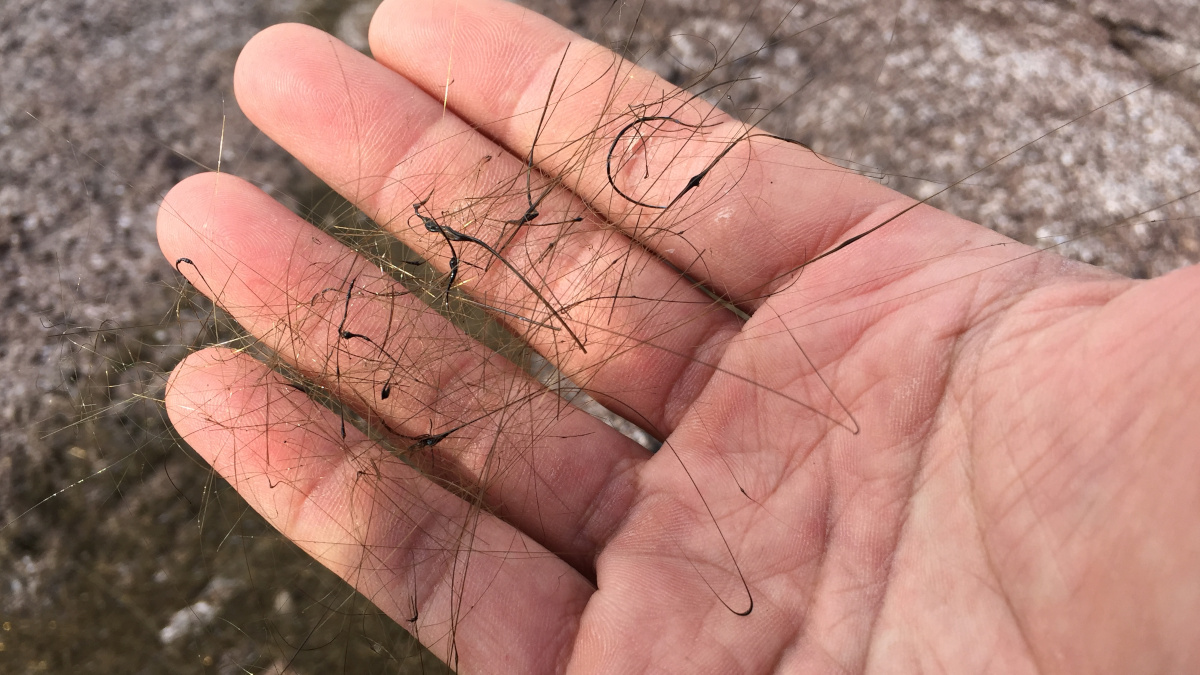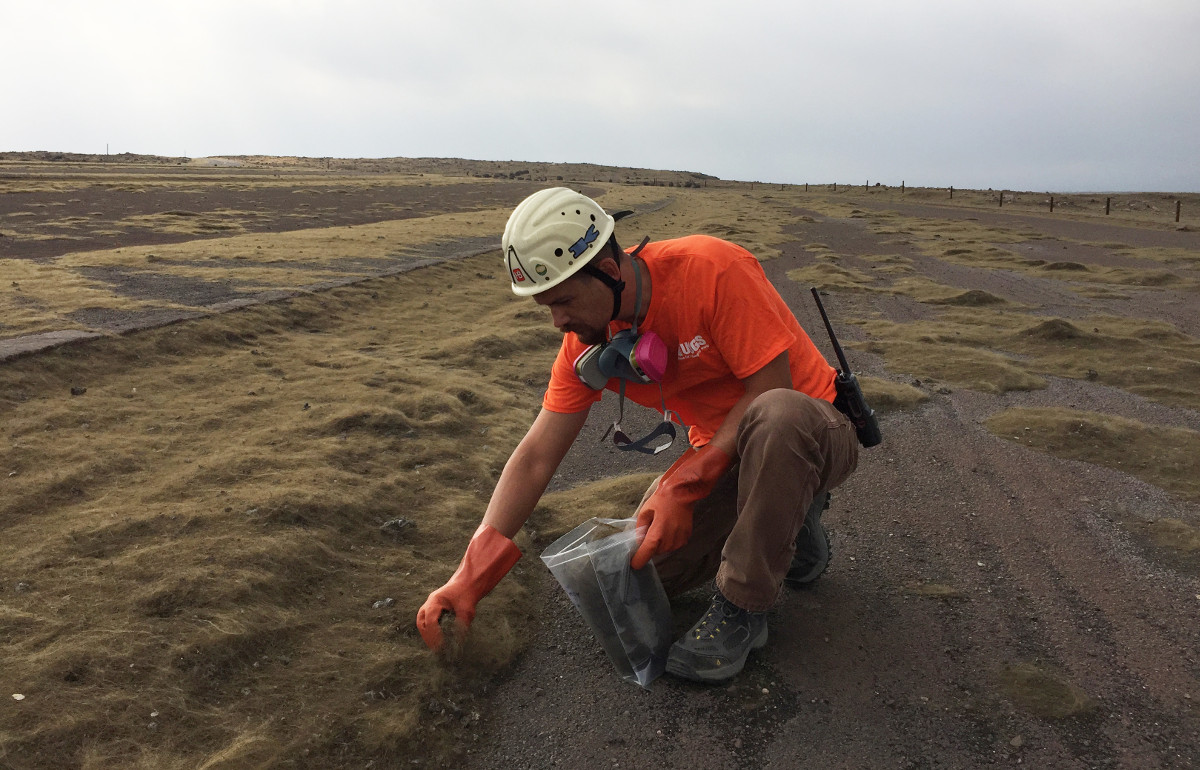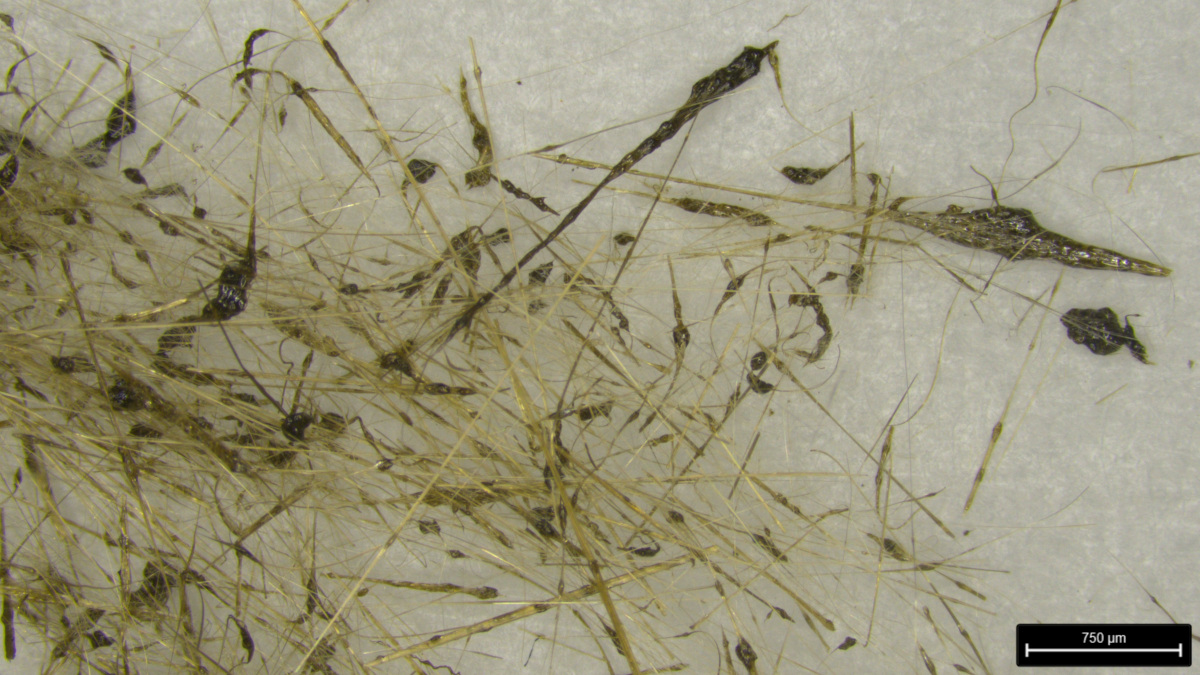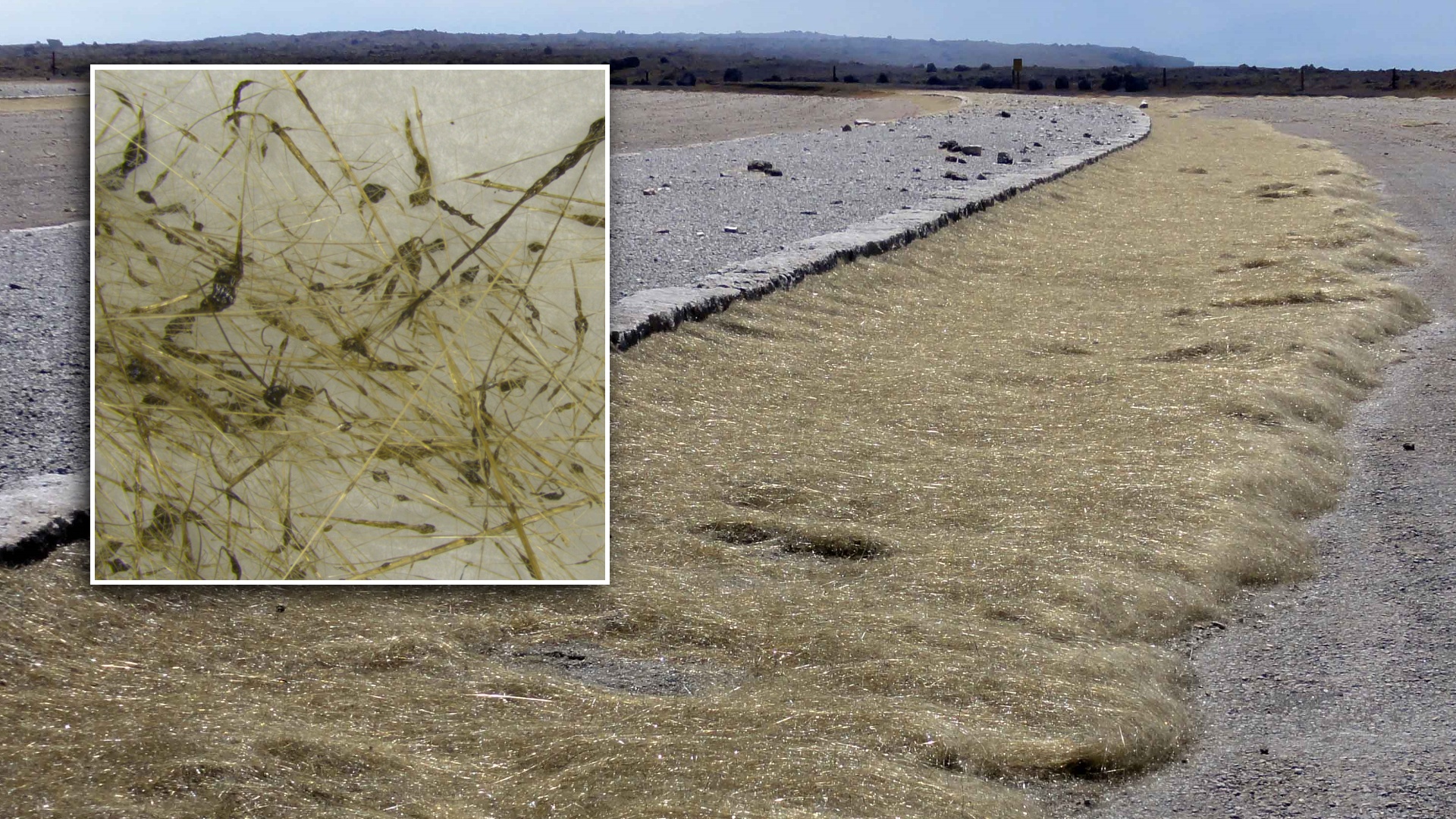
USGS: “A close-up of Pele’s hair from Kīlauea Volcano’s summit lava lake. X-ray diffraction analyses of the Pele’s hair (basaltic glass) collected today will provide information on the mineralogy of Kīlauea lava, which, in turn, can shed light whether the magma supply to the volcano is constant or is changing.”
(BIVN) – This week’s Volcano Watch article, written by U.S. Geological Survey Hawaiian Volcano Observatory scientists and affiliates, examines the hazard of Pele’s hairs, strands of volcanic glass produced during eruptions.
From HVO affiliate Jo Schmith of the Center for the Study of Active Volcanoes:
Shiny and elusive, featherlight and golden-brown. If poets were to write about rocks, I’m sure they would sing their praises of Pele’s hairs. Don’t be fooled, though, because Pele’s hairs are strands of volcanic glass, and they can pose a serious hazard.
The fragile hairs easily break into tiny pieces, and no one wants glass splinters in their eyes or skin that just keep breaking when you try to pull them out. So, leave the hairs be if you find them.
Pele’s hairs can be more than 1 meter (3 feet) long and are often less than 1 millimeter (0.04 inches) thick. During the recent Mauna Loa eruption in November–December 2022, Hawaiian Volcano Observatory scientists went to explore the Daniel K. Inouye Highway (Saddle Road) for erupted material. Along the sides of the road, they saw strands up to 50 centimeters (20 inches) long, as well as clumps of entangled hairs. Observant residents and visitors saw them on the ground at the Mauna Kea visitor center and all the way to Honokaʻa, reporting their findings to HVO. We were glad they did!
Pele’s hairs form when molten lava is torn apart. Like the thinning strings that form when you pull your hands away from sticky dough, the hair strands form when blobs of lava are torn apart and the fluid lava still connecting them is stretched thin. The outer skin of the lava is cooled quickly by the air and forms volcanic glass that freezes this fragile moment in time. However, if the skin is cooled too quickly before it is stretched thin, it will break into glass pieces instead. If the lava is too sticky, it cannot be stretched enough to form hairs.

(USGS) A USGS-HVO scientist collects Pele’s hair from the parking area south of Halemaʻumaʻu Crater, which has been closed since early 2008 due to ongoing volcano hazards associated with the summit lava lake. His gas mask was at the ready just in case the wind shifted, USGS says.
That is why Pele’s hairs only form on basaltic volcanoes that produce fluid lava like in Hawaii. However, if the melted rock is too fluid, it will behave more like water and form droplets instead. In Hawaii those are known as Pele’s tears. The same is true if the air is too hot and doesn’t cool the skin fast enough. If pulled apart too quickly the lava will not have enough time to stretch, and again it will break into pieces. So, Pele’s hairs only form under very specific conditions, and the best conditions are in vigorous Hawaiian lava fountains or in bubbling lava lakes.
Scientifically, Pele’s hairs are part of the tephra family that includes all solid particles flying out of a volcanic vent. The most common way to classify tephra is by grain size. For example, ash is defined as tephra particles smaller than 2 millimeters (0.079 inches), and lapilli is defined as tephra particles between 2 millimeters and 64 millimeters (0.079 to 2.52 inches). The largest tephra particles have two names. Tephra particles above 64 millimeters (2.52 inches) are called bombs if they are made from the freshly erupting magma, but they are called blocks if they are made from preexisting rocks blasted by more explosive activity.

USGS: “A tumbleweed of Pele’s hairs—collected near Saddle Road on November 29, 2022—viewed under a microscope. The scale bar in the lower right is 750 micrometers (0.03 inches) wide. The golden-brown glass strands are intertwined, whereas the thicker dark glass is rigid. The shape of the darker glass reflects the shape of the lava droplets as they quenched.”
But what about Pele’s hairs? It seems a bit of a stretch (pun intended) to call them “bombs” even though they are often more than 64 mm (2.52 inches) long. Bombs or blocks typically fall in the area close to the vent and pose a significant hazard in that area. In 1924 a photographer that ventured too close to the explosions from Kīlauea’s Halema‘uma‘u crater was fatally injured by a falling block. Pele’s hairs falling on you would not do that. Instead, they travel with the wind like ash.


by Big Island Video News8:51 am
on at
STORY SUMMARY
HAWAIʻI ISLAND - Pele’s hairs - strands of volcanic glass that are ejected during volcanic eruptions - can pose a serious hazard.